Keyword: window
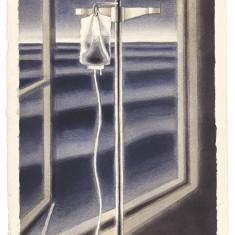
Lifeline (Intravenous solution and ocean)
In a sketchbook, Robert notes: “Blood is a simultaneous symbol of birth, life and death. Water operates the same way; a life-giving substance that one can drown in.” Robert often used parallels and contrasts in his work. Here he contrasts an apparatus of modern
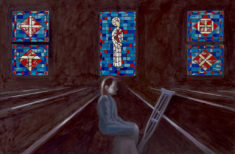
Hospital Chapel
The geometry of converging lines and the contrast of darkness and light supply the atmosphere for this meditation on the role of religion in the patient’s recovery. It is one of only a handful of images that Robert created of patients
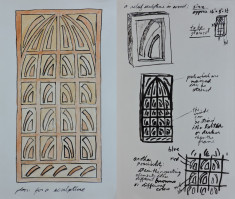
Plan for Sculpture (Window)
Robert’s father William had done some wood carving as a young man, but as his family and business grew, this past-time was abandoned. To encourage a revival of this creative activity, Robert presented his father with a design for a bas relief carving. The design features

Mountain
Robert was often influenced by the lyrics to popular songs. The Elvis song, “Lord, You Gave Me a Mountain,” written by Marty Robbins (1968) is a gospel-flavoured dialogue with God, a tale of pain and bewilderment, a hard life surviving

Window (Night)
Robert realized the creative possibilities of making variations on the same work. With the matching paintings, Window (Day) and Window (Night), Robert has not changed the composition, only the light and colour. When seen together, the pair of paintings create
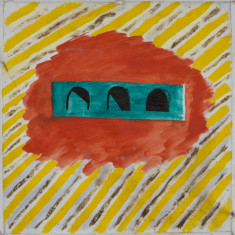
Mirage (Artist’s Studio)
A sketchbook drawing of Robert’s Argyle Street studio reveals a row of arch-shaped windows spaced along a red brick wall. Floorboards run underfoot in parallel lines. Here Robert has abstracted these elements into a row of arches, striped lines and
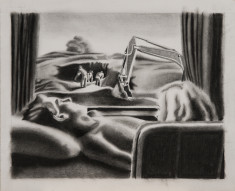
Excavation with Patient and Window
Robert made 5 versions of this image, using charcoal, pen and ink and watercolour to explore different aspects of his idea. Yet oddly, none of these versions appear in his book, Illness & Healing. It was one of the first drawings in
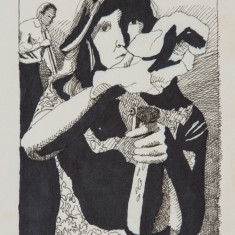
Study for Cleaning Windows
Like a mime artist working without props, the woman cleans an invisible surface–a pane of glass is suggested without actually showing one. (Without the window, it looks like the woman is about to squirt the viewer in the eye. A little
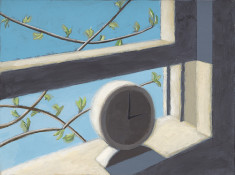
Window (Day)
Clocks often appear in Robert’s work, especially after his illness. One thinks his drawings of Terry Fox jogging past Halifax’s Old Town Clock, or of the clocks that appear in his images of waiting rooms. This de Chirico-like scene, combining
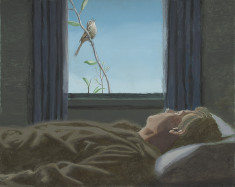
Sparrow
The view from the window of spring-time trees in first leaf and blossom, the atmosphere of burgeoning life, contrasts with the patient’s sense of confinement and immobility. The world outside becomes a dream-like fantasy the patient longs to be a